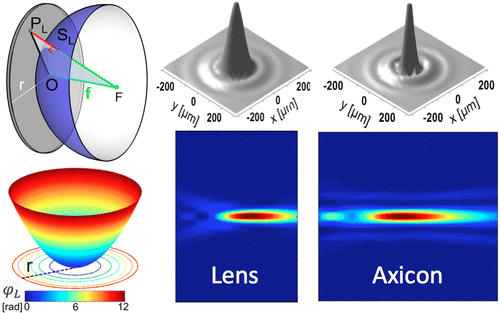Revolutionary ultrathin, flat lens: Smart phones as thin as a credit card?

Scientists are reporting development of a revolutionary new lens—flat, distortion-free, so small that more than 1,500 would fit across the width of a human hair—capable in the future of replacing lenses in applications ranging from cell phones to cameras to fiber-optic communication systems. The advance, which could lead to smart phones as thin as a credit card, appears in ACS' journal Nano Letters.
Federico Capasso and colleagues explain that the lenses used to focus light in eyeglasses, microscopes and other products use the same basic technology dating to the late 1200s, when spectacle lenses were introduced in Europe. Existing lenses are not thin or flat enough to remove distortions, such as spherical aberration, astigmatism and coma, which prevent the creation of a sharp image. Correction of those distortions requires complex solutions, such as multiple lenses that increase weight and take up space. To overcome these challenges, the scientists sought to develop a new superthin, flat lens.
Although the new lens is ultra-thin, it has a resolving power that actually approaches the theoretical limits set by the laws of optics. The lens surface is patterned with tiny metallic stripes which bend light differently as one moves away from the center, causing the beam to sharply focus without distorting the images. The current version of the lens works at a specific design wavelength, but the scientists say it can be redesigned for use with broad-band light.
More information: Aberration-Free Ultrathin Flat Lenses and Axicons at Telecom Wavelengths Based on Plasmonic Metasurfaces, Nano Lett., 2012, 12 (9), pp 4932–4936. DOI: 10.1021/nl302516v
The concept of optical phase discontinuities is applied to the design and demonstration of aberration-free planar lenses and axicons, comprising a phased array of ultrathin subwavelength-spaced optical antennas. The lenses and axicons consist of V-shaped nanoantennas that introduce a radial distribution of phase discontinuities, thereby generating respectively spherical wavefronts and nondiffracting Bessel beams at telecom wavelengths. Simulations are also presented to show that our aberration-free designs are applicable to high-numerical aperture lenses such as flat microscope objectives.
Journal information: Nano Letters
Provided by American Chemical Society



















